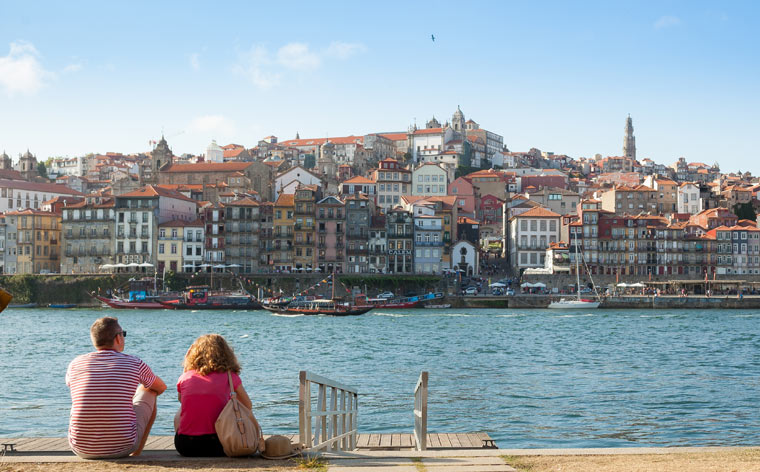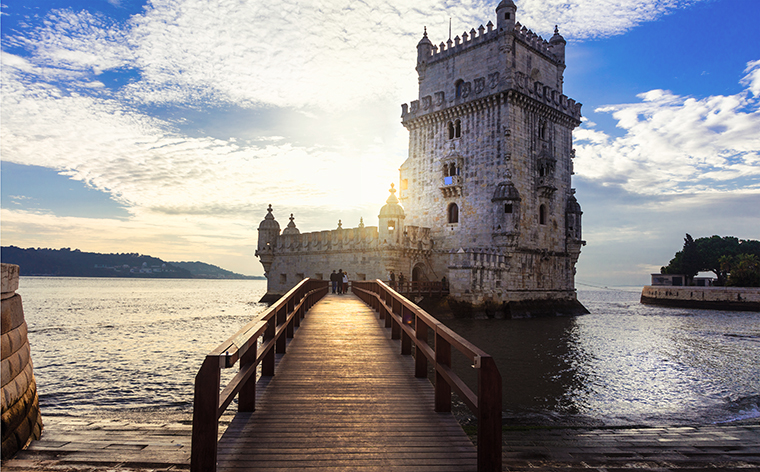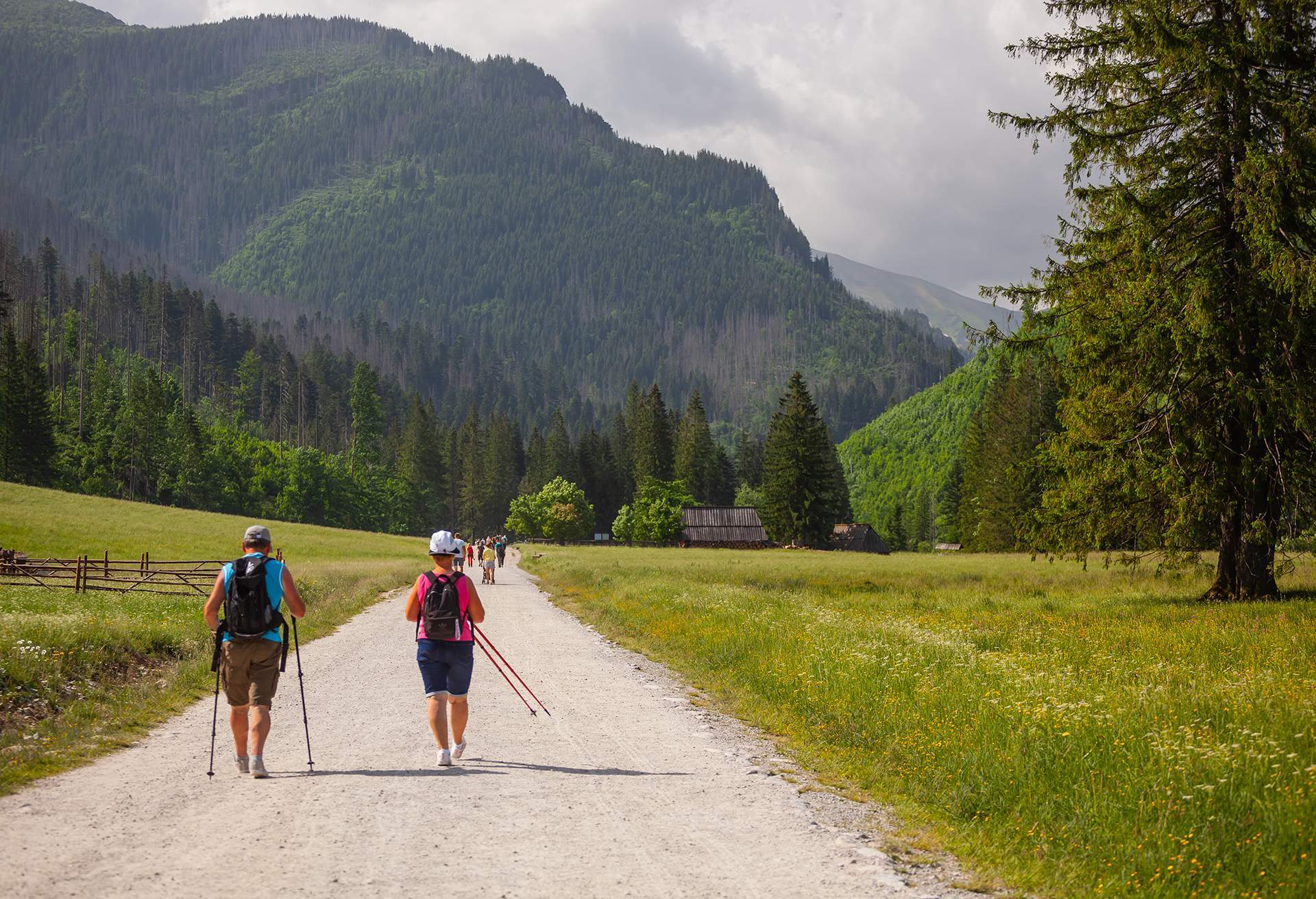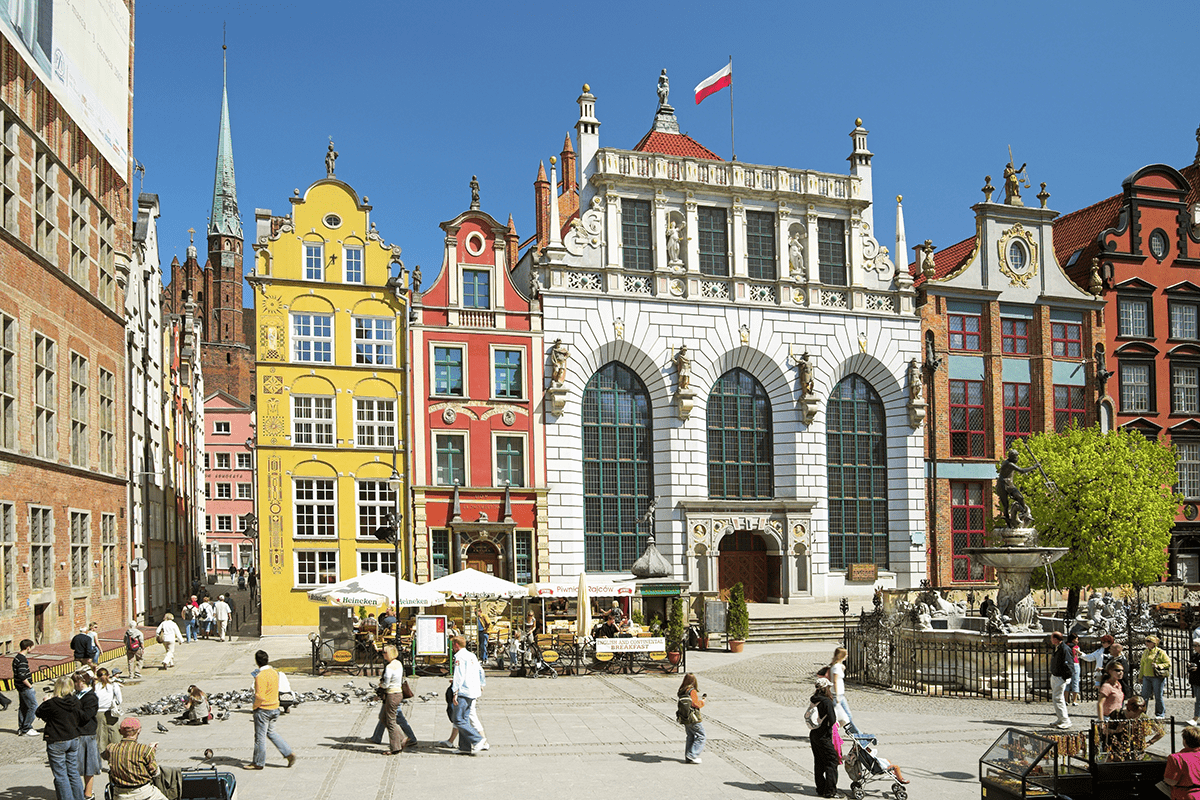For a small country, Portugal packs a lot of grape vines. There are 13 different wine regions in total, if you count the exotic islands of Madeira and The Azores. And why wouldn’t you? With each region offering its own dazzling array of wines, the more there are to visit, the better.
Since you probably can’t experience all 13 in one trip (at least without dying of euphoria) we’ve taken it upon ourselves to single out the best six Portuguese wine regions to visit right now. And don’t worry about missing the others – it just means you have an excuse to come back.
Douro Valley
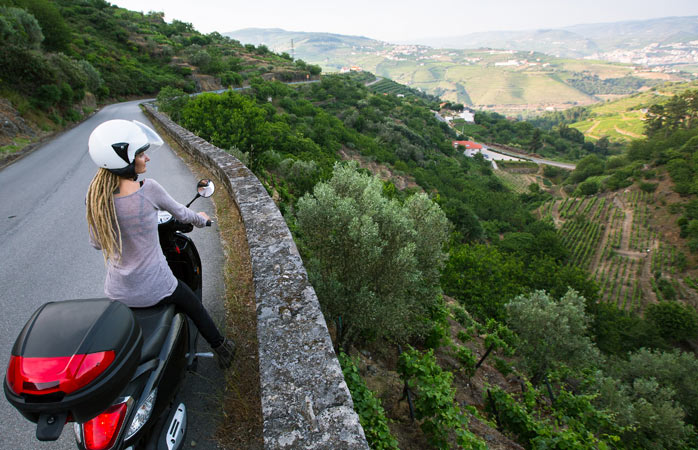
A woman travels by scooter overlooking the Douro Valley
The Douro River wakes in Spain, stretches like a lazy Sunday morning across the width of Portugal, and culminates as a yawn in Portugal’s second largest city, Porto. Along the way, it nourishes grape vines and olive trees, crosses sun-baked landscapes, and nods in passing to dozens of sleepy villages.
The valley itself is a Unesco World Heritage Site and the oldest demarcated wine region in the world. It’s also the home of that sweet, fortified deliciousness known as Port wine. Sample it at one of the Douro’s best wine estates (called quintas), like Quinta de Santa Eufemia — a family-run vineyard just an hour’s drive outside of Porto known for its warm hospitality and a penchant for doing things the traditional way (aka, stomping grapes by foot!) Or try Quinta do Pego, a hilltop estate complete with hotel accommodation, where you can sip your award-winning Port while relaxing in the swimming pool, incredible views sprawling out before you.
Working the Douro land isn’t easy – vines are grown in schist (a slate-like rock), on steep hills with man-made terraces, in harsh weather conditions. But the hard work pays off. The Douro offers exceptional, highly unique wines and sweeping landscapes that are equally breathtaking when viewed from land or by river cruise.
Minho
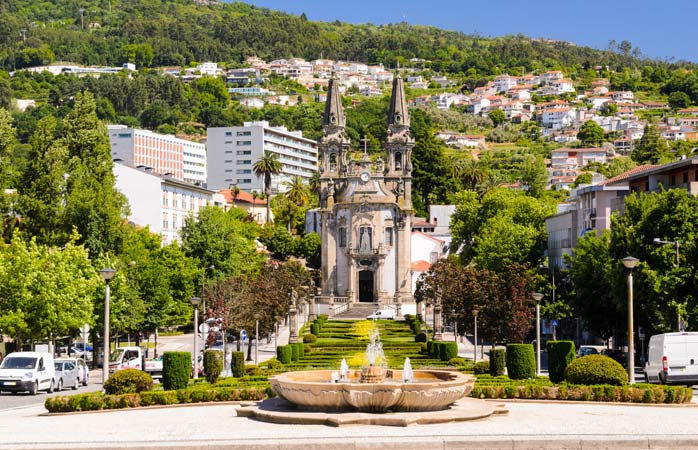
The Church of Our Lady of Consolation and the Holy Steps in Guimarães, Portugal
You know when you’re sitting out in the sun on a hot afternoon and you’re hit by a desire for something cool and fruity and fresh? Well, the Portuguese have a wine for that. It’s called vinho verde.
Vinho verde translates literally to ‘green wine’ – though by green they actually mean young. Who knew immaturity for wines could be such a good thing? Vinho verdes tend to be light and fresh with a flirtatious hint of fizz.
To sample vinho verde on its home turf, head to the historic Minho province, the largest wine region in Portugal by size. The Minho green wine trail will take you through plenty of gorgeous wine estates. Try Quinta da Aveleda, known for its romantic ruin-filled gardens and vineyards, and Quinta de Soalheiro for its award-winning Alvarinho wines.
While in Minho, soak up some of the charming cities and historic sites, like Guimarães, Portugal’s medieval capital; or Braga, whose star attraction is the Sanctuary of Bom Jesus, complete with panoramic views and a 577-step baroque staircase.
Alentejo
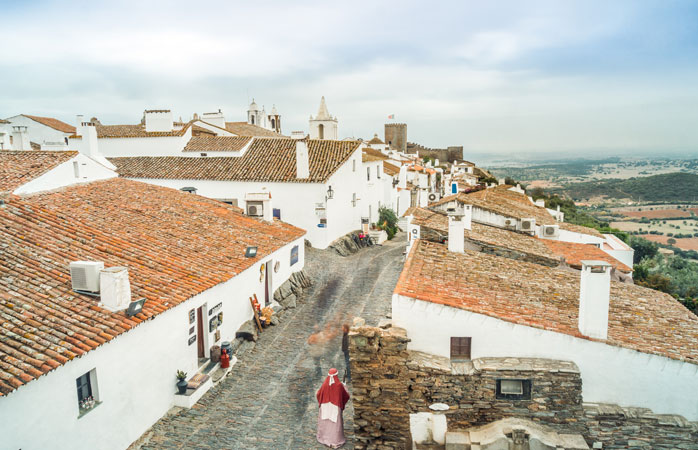
The medieval village of Monsaraz sits atop a hill in the Portuguese Alentejo region
Every beach-lover and their surfboard flocks to the south of Portugal for summer holidays. Here, the Algarve is the best option for getting your tan on; but it’s not the best region for wine. For a fine drop in the south, head instead to Alentejo.
The region itself is huge and rural, with vast plains of wheat, cork oaks and olives stretching into the distance. The hot Mediterranean climate yields many easy-drinking wines, especially reds. And while it’s only in recent decades that the region has grown in international prominence, its viticulture history goes all the back to the ninth century BC.
Estates like Adega José de Sousa and Herdade do Rocim even produce a type of wine called Vinho de Talha, which is made in huge clay pots using a technique that dates back all the way to ancient Rome.
If you get hungry while on the trail, pair your Alentejo red with one of the region’s beloved traditional dishes — like ‘porco preto’, succulent pork from free-roaming Iberian black pigs.
Dão
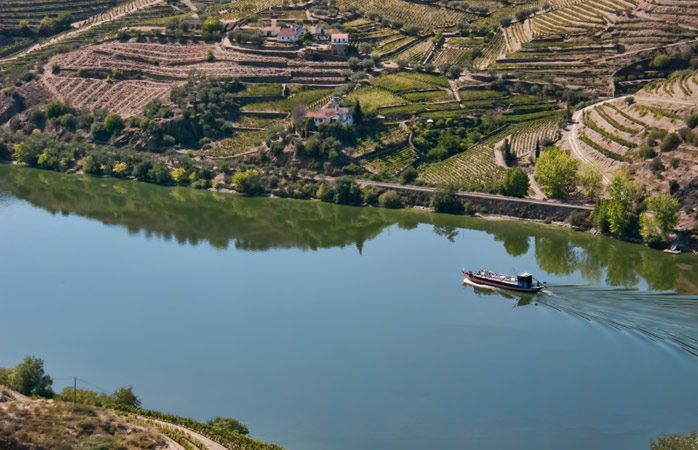
The Douro River seen from Tabuaço, near Viseu, Portugal
If you haven’t heard of the Dão region, don’t worry – it may not be the most famous, but that just means there are more hidden (wine) gems to discover.
Grapes in the Dão region grow at higher altitudes, protected by mountains on all sides for a temperate climate. If rich, structured wines with good acidity are what you’re after, this is the place to find them.
One of the most prominent and noble varietals of the Dão region is the Portuguese “queen” of grapes, the Touriga Nacional – an inky, rich and deeply aromatic grape that’s credited for giving many Dão reds their velvety smoothness.
While on the Dão wine trail, stop in at Paço dos Cunhas de Santar or Quinta do Cabriz. Both vineyards house acclaimed restaurants where every drop of wine is given the gastronomical accompaniment it deserves. Naturally, you’ll want to save room for dessert.
Lisbon
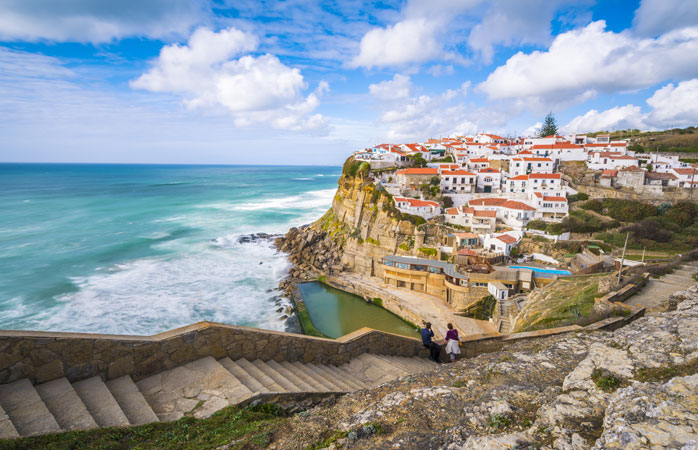
Stunning views of the coastal village Azenhas do Mar – Sintra, Portugal
Portugal never lets you down, even the capital city is inside a wine region! Greater Lisbon contains nine sub-regions for wine, each with its own characteristics.
If you have to pick one to visit, make it Colares. This small subregion sits in the Sintra-Cascais natural park, with Sintra’s fairytale palaces to one side and a coastline of cute fishing villages on the other.
Vines here are grown directly upon the sand, which looks strange and haphazard but yields great results – like the powerfully tannic reds blended from native Ramisco grapes.
Because of suburban expansion, only about 50 acres of Colares’ vineyards remain. It’s an easy day trip from central Lisbon; support the region by booking a wine-tasting experience at one of the local producers like Adega Regional de Colares or Adega Viúva Gomes.
Madeira
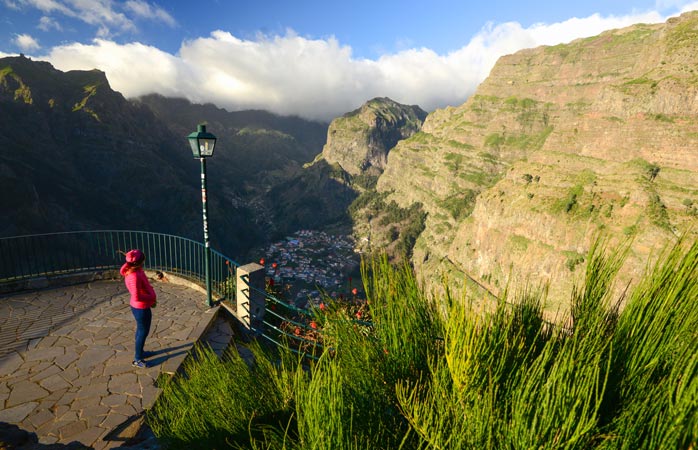
A woman admires the view of Madeira Island from a viewpoint
As if you need a reason to visit a lush tropical island … but we’re going to give you one anyway. It’s called Madeira wine. After Port, Madeira wine would be the second most famous fortified wine from Portugal. It comes in a range of varieties, from sweet to dry, each as special as the next thanks to a unique wine-making process.
How is it made? Most commonly the wine is placed in stainless steel vats that are heated to a temperature of 45-50 degrees Celsius for a period of at least three months, then left to rest for at least three months more. The highest quality Madeira wines forgo the artificial heating process, instead leaving barrels in the sun to heat naturally – sometimes for as long as 20-100 years. To taste some fine Madeira wines, add Blandy’s Wine Lodge, located in central Funchal, and Vinhos Barbeito (just a 20-minute drive from Funchal’s centre) to your Madeira Island itinerary.
If the idea of unique, delicious fortified wines doesn’t make you want to pack your bags, well, what can we say – there’s always the lush volcanic landscapes, exotic fruits and stunning beaches. Head to the island’s northern tip to dive into one of the crystal-coloured Cachalote Natural Swimming Pools, nestled into cliffs of volcanic rock; or bathe in the sunshine on one of the golden sand beaches in the historic town of Machico.
